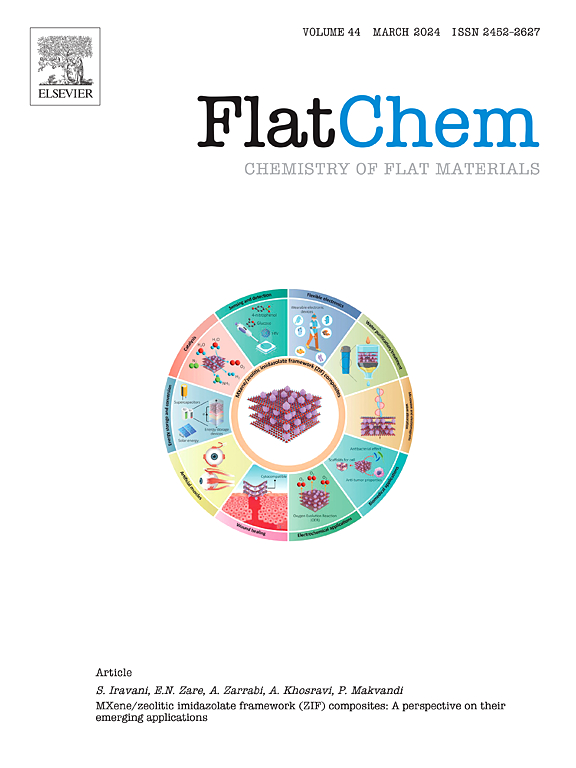Recent advances in MXene-based materials for zinc-ion batteries
IF 6.2
3区 材料科学
Q2 CHEMISTRY, PHYSICAL
引用次数: 0
Abstract
Zinc-ion batteries (ZIBs), emerging as a novel power source, boast benefits like enhanced security, affordability, and eco-friendliness. The real-world use of ZIBs faces obstacles because of the narrow electrochemical stability range, the disintegration of active electrode substances, and inadequate growth and lifespan of zinc dendrites. Owing to their unique structural characteristics as well as physical and chemical properties, including excellent electrical conductivity, adjustable interlayer spaces, low-energy barriers, rich-surface functional groups (e.g., ![]() OH,
OH, ![]() O,
O, ![]() Cl, and
Cl, and ![]() F), and ample chemical compositions, MXenes-based materials can solve the above-mentioned problems of ZIBs. The paper examines the latest advancements in research on MXenes-based substances (zero dimension, one dimension, two dimension, and three dimension) in ZIBs applications, including MXene-based materials anodes, cathodes, electrolyte, separator and current collectors. Furthermore, an in-depth exploration of the structural design and reaction processes of MXene-based substances in ZIBs is conducted. Lastly, a concise discussion is presented on the current difficulties and viewpoints regarding MXene-based substances for ZIBs.
F), and ample chemical compositions, MXenes-based materials can solve the above-mentioned problems of ZIBs. The paper examines the latest advancements in research on MXenes-based substances (zero dimension, one dimension, two dimension, and three dimension) in ZIBs applications, including MXene-based materials anodes, cathodes, electrolyte, separator and current collectors. Furthermore, an in-depth exploration of the structural design and reaction processes of MXene-based substances in ZIBs is conducted. Lastly, a concise discussion is presented on the current difficulties and viewpoints regarding MXene-based substances for ZIBs.

锌离子电池用mxene基材料的研究进展
锌离子电池(zib)作为一种新兴的能源,具有增强安全性、可负担性和环保性等优点。由于锌枝晶的生长和寿命不足,锌枝晶的电化学稳定范围窄、活性电极物质分解、锌枝晶的生长和寿命不足,锌枝晶在实际应用中面临着障碍。mxenes基材料具有优异的导电性、可调节的层间空间、低能垒、丰富的表面官能团(OH、O、Cl、F)和丰富的化学成分等独特的结构特征和物理化学性质,可以解决ZIBs的上述问题。本文综述了mxenes基材料(零维、一维、二维和三维)在ZIBs中的最新研究进展,包括mxenes基材料的阳极、阴极、电解质、分离器和集流器。进一步深入探讨了mxene基物质在ZIBs中的结构设计和反应过程。最后,简要讨论了目前锌锌材料中mxene基物质的难点和观点。
本文章由计算机程序翻译,如有差异,请以英文原文为准。
求助全文
约1分钟内获得全文
求助全文
来源期刊

FlatChem
Multiple-
CiteScore
8.40
自引率
6.50%
发文量
104
审稿时长
26 days
期刊介绍:
FlatChem - Chemistry of Flat Materials, a new voice in the community, publishes original and significant, cutting-edge research related to the chemistry of graphene and related 2D & layered materials. The overall aim of the journal is to combine the chemistry and applications of these materials, where the submission of communications, full papers, and concepts should contain chemistry in a materials context, which can be both experimental and/or theoretical. In addition to original research articles, FlatChem also offers reviews, minireviews, highlights and perspectives on the future of this research area with the scientific leaders in fields related to Flat Materials. Topics of interest include, but are not limited to, the following: -Design, synthesis, applications and investigation of graphene, graphene related materials and other 2D & layered materials (for example Silicene, Germanene, Phosphorene, MXenes, Boron nitride, Transition metal dichalcogenides) -Characterization of these materials using all forms of spectroscopy and microscopy techniques -Chemical modification or functionalization and dispersion of these materials, as well as interactions with other materials -Exploring the surface chemistry of these materials for applications in: Sensors or detectors in electrochemical/Lab on a Chip devices, Composite materials, Membranes, Environment technology, Catalysis for energy storage and conversion (for example fuel cells, supercapacitors, batteries, hydrogen storage), Biomedical technology (drug delivery, biosensing, bioimaging)
 求助内容:
求助内容: 应助结果提醒方式:
应助结果提醒方式:


